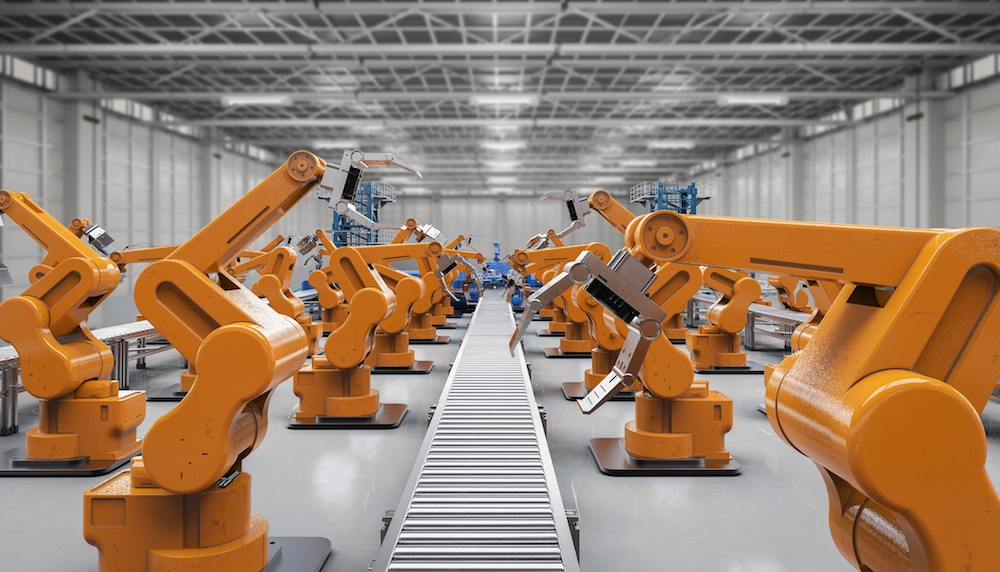Top Robotics Challenges for Businesses
As businesses continue to evolve and seek new ways to improve efficiency and productivity, robotics has emerged as a promising technology to achieve these goals. Robotics allows companies to automate tasks, reduce costs, and increase accuracy, among other benefits. However, the adoption of robotics also presents unique challenges for businesses. Robotics can be a powerful tool for companies to maximize their capacity and improve operational efficiency. By automating tedious and repetitive tasks, companies can free up resources to focus on more critical objectives. If you are considering robotics for your business, contact our experts at IT Support Denver for assistance.
According to a statistical report by statista, the global market for industrial robots is booming. In 2021, it was valued at an incredible 43.8 billion U.S. dollars, and is projected to grow at a staggering compound annual growth rate (CAGR) of 10 percent, reaching almost 70.6 billion U.S. dollars by 2028. Investing in this rapidly expanding market now could prove to be a huge opportunity for businesses worldwide.
This article will explore some of the top robotics challenges businesses face in today’s fast-paced technological landscape.
8 Top Challenges for Businesses
1. New Materials, Fabrication Methods
The advancement of Robotics has been happening at an unprecedented pace in the past few years, but several critical challenges still need to be addressed. One of the most significant challenges the robotics industry faces is the need for new materials and fabrication methods. Gears, motors, and actuators are at the core of a robot, requiring specific materials and fabrication methods to be more efficient, lighter, and more powerful.
Moreover, Robotics also explores developing artificial muscles, soft robotics, and assembly strategies to create more powerful and autonomous robots. Integration of artificial intelligence into robotics technology is being investigated as a potential solution for the challenges.
2. Communication in Robot Swarms
Robot swarms can also become a hurdle in communication through robotics. Each robot must sense its environment and communicate with the other robots to ensure that they work coherently as a collective. However, communication must be carried out independently without any human intervention. Furthermore, data sharing and data collection represent additional hurdles that must be overcome to ensure that data can be securely transmitted, even when the connection is broken.
To overcome this challenge, robotics manufacturers need to develop strategies for data sharing that can work in all environments, including where human presence is not possible. Content marketing is a popular and effective way of engaging with prospects and increasing brand awareness in the robotics sector.
3. Data Flexibility
Data flexibility can also become a challenge in using robotics technology in business. With robots performing various tasks and generating enormous amounts of data, storing the data properly becomes essential. In addition, enterprises must ensure that data can easily be exported from their robotic fleets to various tools. Robots are used for numerous jobs, such as product transport, lifting and sorting, and AI (Artificial Intelligence) to select and sort recyclable materials.
Companies can use data analysis to optimize performance and speed up the deployment of robotic fleets, which is highly beneficial. However, it is challenging to achieve when presented with data flexibility challenges.
4. Deployment Restrictions
Deploying robotic fleets in enterprises requires careful consideration of deployment restrictions. For example, deploying robots in air-gapped facilities like nuclear power plants must be done locally. Similarly, hospitals may have specific requirements around where data resides due to HIPAA compliance. In addition, cloud-based software for robotics can be complicated due to security and compliance issues.
Local deployments have advantages as they enable data collection from different locations, eliminate gaps in connectivity, and remove the lack of bandwidth. However, enterprises must evaluate their deployment considerations and restrictions to implement robotic fleets successfully.
5. Navigation
Navigation is one of the biggest challenges facing the field of robotics. While there have been significant advancements in recent years, such as the development of self-driving vehicles, robots still need help to navigate unmapped and uncertain environments. Diligent Robotics and other companies are working on developing autonomous robots that can navigate hallways and other tight spaces.
Additionally, future robots will need social intelligence, such as head movements, to interact with and navigate their environment effectively. Nevertheless, the continued progress in robotics navigation holds great promise for the future of the field.
6. Safety Measures
Regarding robotics and AI, safety measures must be taken to avoid potential hazards. This is especially true for industrial robots with their mechanical strength. Designing work cells cordoned off by light or pressure sensors are essential to keep workers safe. Companies should also take ethical concerns thoughtfully when deploying robots into the workplace. This includes issues of responsibility, unemployment, and freedom. In the case of AI robots, they possess an AI brain that can help with intelligent automation.
In the medical field, one of the biggest challenges for robotics is building reliable systems with greater autonomy. Autonomous robots must have provably safe algorithms and meet medical device regulations to balance compliance costs. Overall, safety must always be a top priority for robotics and AI.
7. Managing Product Workflow
Managing product workflow can become difficult through robotics. By automating operations with AI-enabled robots, teams can become more productive and able to handle time-consuming tasks. In addition, robots with social intelligence can also be utilized to complete logistical functions like setting up patient rooms and restocking supply rooms.
Additionally, robotics and AI can help expand workforce capacity by automating tasks previously done manually. Companies worldwide already leverage AI software platforms to manage product workflow, from design to production.
8. Employee Skills and Training
One of the biggest challenges in this field is ensuring employees have the necessary skill set and training to work effectively with robotics and AI. This requires knowledge of coding and complex AI strategies to create autonomous robots. To overcome this challenge, companies must invest in employee training programs and provide ongoing education opportunities to keep up with the constantly evolving technology in this field.
Robotics and AI are rapidly growing fields, with high schoolers even competing in the Botball Educational Robotics Program to gain knowledge and experience. In addition, companies increasingly turn to AI software platforms to automate their operations and create more productive teams. AI robots are the result of combining robotics for the body with AI for the brain. For example, Diligent Robotics provides an AI-enabled robot that performs time-consuming tasks in hospital environments with the help of social intelligence.
Conclusion
The adoption of robotics has become increasingly crucial for businesses looking to stay competitive and improve their operations. However, as with any new technology, robotics presents various challenges that must be addressed for successful implementation. From selecting the right technology to integrating it with existing systems and addressing ethical concerns, businesses must navigate a complex landscape to realize the benefits of robotics fully. Fortunately, with careful planning, investment in the right resources, and a commitment to ongoing education and innovation, businesses can overcome these challenges and unlock the full potential of robotics.
Post courtesy: Greystone Technology – IT Services Provider in Denver, Colorado






